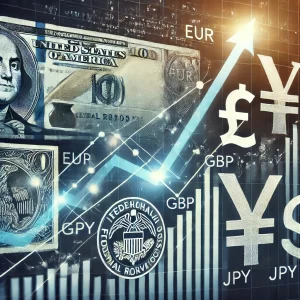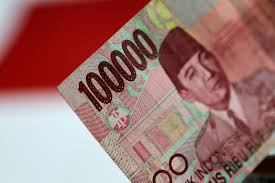Introduction
The Asia-Pacific foreign exchange markets have entered a heightened state of volatility following a series of significant economic and geopolitical developments. According to a comprehensive report by Forexlive on July 7, 2025, currency markets across the region are experiencing aggressive swings triggered by a triad of market-moving forces: renewed tariff tensions, a sudden spike in oil prices, and growing wage pressures in developed economies. This confluence of global events is making the forex environment particularly unpredictable for traders and institutions alike.
As financial markets absorb these developments, traders are recalibrating their strategies, hedging against wider risk, and bracing for further instability in the near term. Here’s a deep-dive analysis of the key factors that are driving the current wave of forex market volatility and how they are shaping investor behavior and central bank responses.
The Tariff Shock: Trade Tensions Return With A Vengeance
In what many are calling a flashpoint for global markets, recent trade actions between major economies have ignited fresh fears of a return to protectionism. The U.S. administration’s decision to impose punitive tariffs on a range of Chinese manufactured goods—including semiconductors, electric vehicles, and rare earth materials—has sent shockwaves through the currency markets.
This decision has not only reignited tensions between the world’s two largest economies but also rattled investor sentiment across Asia-Pacific. The Chinese yuan experienced steep intraday declines as traders rushed to reprice risk, while currencies from export-dependent countries like South Korea and Singapore also came under pressure.
The retaliatory tone from Beijing, which quickly announced countermeasures targeting American agricultural and technology exports, deepened the concern. FX strategists warn that prolonged tariff escalation could significantly hamper trade flows in the region, weakening currencies tied to global trade cycles. In the short term, volatility remains the dominant theme, with speculative flows surging in and out of Asian markets based on policy headlines.
Oil Jitters Add Fuel To The FX Fire
Overlaying the trade disputes is another destabilizing force: oil. Brent crude and WTI prices soared over 7% in the last five trading sessions following unexpected production cuts by OPEC+ nations. The announcement by Saudi Arabia and Russia to further restrict output through Q3 2025 has caught energy markets off guard.
Rising oil prices have had ripple effects across the Asia-Pacific forex space. Countries that are net importers of oil, such as Japan and India, have seen their currencies come under considerable strain. The Japanese yen, in particular, recorded its worst week against the U.S. dollar since early March, as higher energy import costs feed into Japan’s already tenuous inflation outlook.
Conversely, oil-exporting economies like Malaysia have seen temporary support in their local currencies. However, even that resilience is proving short-lived, as concerns over global demand destruction due to expensive energy begin to weigh on risk sentiment.
Economists point out that rising oil prices also put central banks in a difficult position—higher energy costs risk stoking inflation just as policymakers in several countries are preparing to ease monetary policy to support growth. This divergence in central bank strategy and market pricing is adding to the volatility seen in cross-currency flows.
Wage Worries And The Labor Market Shock
A third factor that’s contributing to forex turbulence is growing concern around wage inflation. Recent labor data from Australia and New Zealand revealed sharp upward revisions in wage growth figures, prompting speculation about delayed or reduced interest rate cuts in those economies.
Australian average hourly earnings grew at an annualized rate of 5.4% in Q2 2025, far outpacing productivity growth and raising red flags about cost-push inflation. The Reserve Bank of Australia (RBA), which had signaled a dovish tilt earlier in the year, may be forced to hold or even hike rates if wage pressures persist.
These developments have introduced another layer of uncertainty into the forex equation. The Australian dollar initially gained on the stronger wage data, but later gave up gains as investors weighed the impact on broader risk assets and household spending. Meanwhile, the New Zealand dollar faced similar price action as the Reserve Bank of New Zealand remains under pressure to balance inflation targeting with economic stability.
Market participants are increasingly wary of binary outcomes in these economies, which are dependent on both domestic labor market conditions and external trade flows. The wage dynamics have become a wildcard that traders must now factor into any short- or medium-term forex positioning.
How Traders Are Positioning In This Volatile Environment?
With this trifecta of market-moving developments, forex traders are being forced to adapt rapidly. Institutional players have reportedly ramped up hedging activity, using options and forward contracts to protect against adverse swings. Meanwhile, retail traders have shown increased activity in short-term speculative trades, particularly in USD/JPY, AUD/USD, and NZD/USD pairs.
The U.S. dollar has served as a safe-haven currency amid the turmoil, with the DXY dollar index hitting its highest level since January 2024. Analysts warn that while the dollar is benefiting from risk-off flows now, continued inflation or labor market surprises in the U.S. could bring about a reversal of fortune.
Gold and Bitcoin have also emerged as parallel hedging tools in the current environment. Gold prices broke above $2,300 per ounce while Bitcoin briefly crossed $70,000, suggesting that risk-averse capital is looking for alternatives beyond fiat currencies during periods of extreme volatility.
Central Banks Walk The Tightrope
Central banks across the Asia-Pacific region are now confronted with one of the most challenging backdrops in recent years. Inflation, once thought to be under control, is showing signs of reacceleration due to external shocks. At the same time, growth is moderating across key economies, creating a dilemma for policymakers.
In Japan, the Bank of Japan (BoJ) is facing renewed pressure to adjust its yield curve control (YCC) policy as the yen weakens and imported inflation ticks higher. Meanwhile, the Reserve Bank of Australia is expected to adopt a more cautious tone in its next policy meeting, even as market pricing for further rate hikes remains low.
The People’s Bank of China (PBoC), on the other hand, remains in a stimulative posture as it tries to combat domestic deflation and revive consumer confidence. However, currency depreciation and capital outflows may eventually limit its ability to loosen further without destabilizing markets.
The divergence in monetary policy paths is feeding cross-border volatility, especially in the short end of the yield curve and associated currency derivatives.
Outlook: Volatility May Be The New Normal
As we enter the second half of 2025, the forex market appears poised for continued turbulence. With multiple macroeconomic forces in play—geopolitical tension, commodity price shocks, wage inflation, and central bank divergence—market participants should expect a more reactive and less predictable trading environment.
Volatility is no longer an episodic event in forex—it may be the prevailing condition for the foreseeable future. For traders and analysts alike, the ability to adapt quickly, assess fundamental risks, and utilize smart hedging strategies will be critical.
Conclusion
The Asia-Pacific forex landscape is currently undergoing one of its most turbulent periods in recent memory, shaped by a powerful mix of trade disputes, oil market disruptions, and unexpected wage inflation. Each of these forces—on their own—has the potential to trigger volatility. But together, they are creating a complex, fast-moving environment that demands both caution and agility from traders.
As tariffs escalate and geopolitical tensions flare, the market is responding with sharp, unpredictable moves. Simultaneously, the spike in oil prices is tightening financial conditions for import-reliant nations, while wage pressures are unsettling monetary policy outlooks in developed economies. Central banks now walk a narrow path, needing to weigh inflationary risks against the need to support slowing growth.



